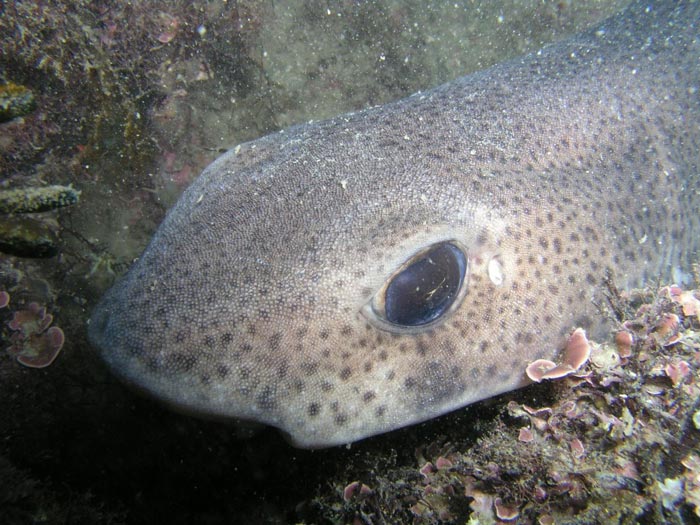A tale of two seas: Last Ice Age has shaped sharks across Europe

This depicts a catshark resting in the daytime. Credit: David Sims
Many previous studies on sharks suggest they move over large distances. But catsharks in the Mediterranean Sea appear to move and migrate much less, as revealed by this study. This could have important implications for conserving and managing sharks more widely, suggesting they may be more vulnerable to over-fishing than previously thought.
The study, published in the new journal Royal Society Open Science, used genetic techniques to investigate the population structure of the small-spotted shark, Scyliorhinus canicula. The species is common throughout Europe and has been eaten since ancient times, as documented in Roman mosaics.
In the UK anglers catch it for sport and it can often be seen in rock pools at low tide. The study found evidence of isolated populations in the Mediterranean, but no population division was found between catsharks around the North East Atlantic and British Isles.
During the last ice age, about 20,000 years ago, ice sheets occupied much of the Seas and Ocean of this region and catsharks probably didn't survive in the area. This means the region had to be recolonised, and there are very little genetic differences between them today.
The study also highlights differences in the movements of males and female catsharks – an increasingly common finding in sharks.
Dr Griffiths, based in the School of Biological Sciences, said: “It makes a lot of sense, females may want to stay in areas that are good for laying eggs, but males are often the dispersing sex, perhaps taking risks to increase how much they reproduce.”
This research has conservation implications; if patterns of population structure vary hugely in different seas, and between the sexes, then shark resilience to fishing can vary greatly, meaning that better informed management could be needed for many species.
Paper
'A tale of two seas: contrasting patterns of population structure in the small-spotted catshark across Europe' by Gubili C et al in Royal Society Open Science.
Media Contact
All latest news from the category: Earth Sciences
Earth Sciences (also referred to as Geosciences), which deals with basic issues surrounding our planet, plays a vital role in the area of energy and raw materials supply.
Earth Sciences comprises subjects such as geology, geography, geological informatics, paleontology, mineralogy, petrography, crystallography, geophysics, geodesy, glaciology, cartography, photogrammetry, meteorology and seismology, early-warning systems, earthquake research and polar research.
Newest articles

Properties of new materials for microchips
… can now be measured well. Reseachers of Delft University of Technology demonstrated measuring performance properties of ultrathin silicon membranes. Making ever smaller and more powerful chips requires new ultrathin…

Floating solar’s potential
… to support sustainable development by addressing climate, water, and energy goals holistically. A new study published this week in Nature Energy raises the potential for floating solar photovoltaics (FPV)…

Skyrmions move at record speeds
… a step towards the computing of the future. An international research team led by scientists from the CNRS1 has discovered that the magnetic nanobubbles2 known as skyrmions can be…




















